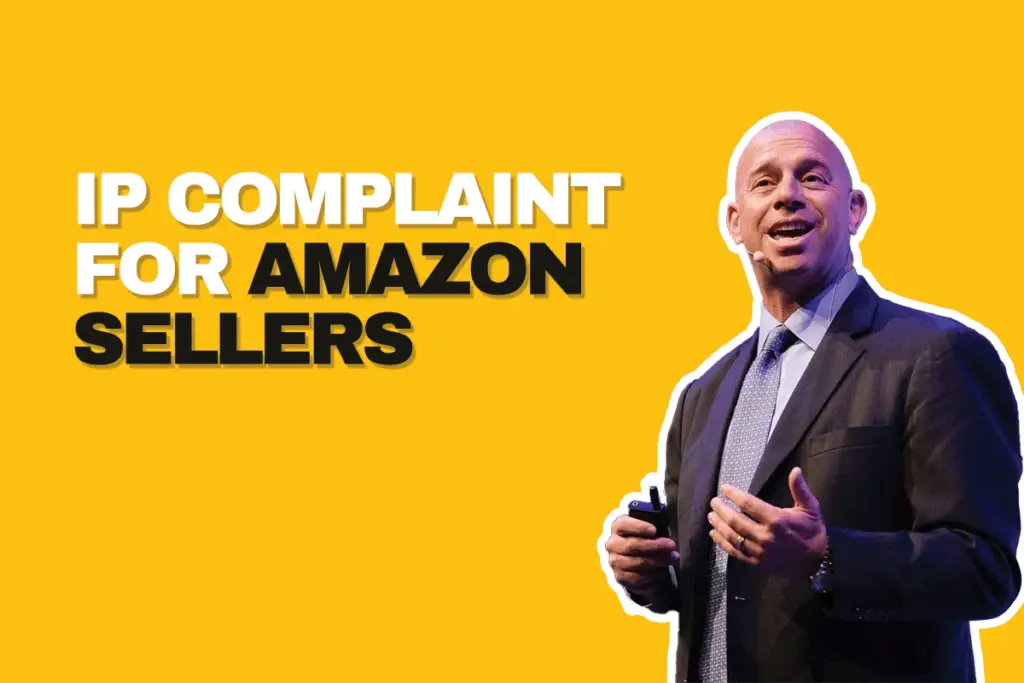How to Handle IP Complaints on Amazon: A Seller’s Legal Guide

For Amazon sellers, few things are more disruptive than receiving an intellectual property (IP) complaint. These complaints—whether valid or not—can trigger listing removals, account suspensions, and even permanent bans. Amazon takes IP claims seriously, but unfortunately, bad actors and competitors often abuse this system. In this comprehensive guide, you’ll learn what IP complaints are, why they happen, and—most importantly—how to resolve them efficiently and protect your account.
Whether you’re facing a trademark, copyright, patent, or counterfeit complaint, this blog post provides a seller-focused, SEO-friendly, and actionable roadmap. Please note: we do not offer free consultations.
What Are IP Complaints on Amazon?
IP complaints are formal claims filed by a rights owner (or their representative) alleging that a seller has violated their intellectual property rights. Amazon allows rights owners to report perceived infringements, which can lead to listing removal, ASIN suppression, or account suspension—sometimes within hours of the complaint.
Sellers may receive an IP complaint for:
Allegedly using a brand’s trademark without authorization
Copying copyrighted images or text
Listing products that infringe on a utility or design patent
Selling goods that are claimed to be counterfeit
Even if the claim is false or mistaken, Amazon often acts first and investigates later—putting the burden on the seller to respond quickly and effectively.
Why IP Complaints Matter to Amazon Sellers
The consequences of unresolved IP complaints can be severe. Sellers may experience:
Immediate listing removal
Permanent ASIN suppression
Account deactivation
Withheld funds
Brand damage and lower seller metrics
What’s worse, multiple IP complaints—even if unfounded—can permanently impact your account health. Understanding how to navigate and prevent these complaints is essential for long-term success on Amazon.
Common Types of IP Complaints on Amazon
1. Trademark Infringement
Occurs when a seller uses a brand’s name, logo, or slogan without authorization. This includes:
Listing under a brand you’re not authorized to sell
Using logos or brand names in your images or bullet points
Creating variations of a registered brand’s name to appear in searches
Example: Listing a Nike product as “Nike-style” shoes without being an authorized reseller.
2. Copyright Violations
These involve the unauthorized use of protected creative content, such as:
Product images copied from another listing or brand website
Copy-pasted product descriptions or A+ content
Marketing materials used without permission
Even if the product is genuine, copying content can still trigger a copyright claim.
3. Patent Infringement
This occurs when a seller offers a product that infringes on an existing utility or design patent. Common examples include:
Selling an identical product design without licensing
Sourcing from a manufacturer who copied a patented item
Overlooking U.S. patents when importing private label goods
Note: Patent complaints often lead to legal action off Amazon as well.
4. Counterfeit Claims
These are the most dangerous. A brand or competitor may claim your product is fake—even if it’s authentic. This can result from:
Listing a product under the wrong UPC
Not providing a proper invoice or chain of custody
A brand not recognizing your distributor or supplier
False counterfeit complaints are a common tactic used to remove competitors.
Step-by-Step Guide: How to Resolve IP Complaints on Amazon
Step 1: Investigate the Complaint
Immediately check:
The email notification from Amazon
The rights owner’s contact information
The ASIN(s) involved
The nature of the complaint (trademark, patent, etc.)
Visit Account Health > Policy Violations in Seller Central to find details. Screenshot everything for your records.
Step 2: Determine the Validity of the Claim
Ask yourself:
Are you authorized to sell this brand?
Did you use protected images or logos?
Are you sourcing from a verifiable, legitimate supplier?
Could a competitor be abusing Amazon’s IP reporting tools?
If you believe the complaint is valid, proceed with corrective actions. If false, you have a right to fight it.
Step 3: Contact the Rights Owner (If Appropriate)
If the email includes the rights owner’s contact info, reach out professionally and ask:
What specific part of the listing they believe is infringing
If they’re open to withdrawing the complaint if you comply or modify content
Whether they filed the complaint themselves or used a third-party agency
Keep all correspondence professional and polite—this may be used in future appeals.
Step 4: Draft a Response to Amazon
If the rights owner won’t remove the complaint, you’ll need to appeal directly to Amazon.
Include:
A professional, factual explanation
Proof of product authenticity (invoices, authorization letters, etc.)
Screenshots of changes made to listings (if applicable)
Any email correspondence with the rights owner
Avoid emotion or blaming. Stick to the facts and provide documentation.
Step 5: Submit Through the Correct Channel
Use the “Appeal” button in the violation notice under Account Health, or email notice-dispute@amazon.com with your case number.
Make sure the subject line includes your account name, ASIN, and Violation ID.
Step 6: Follow Up Strategically
Amazon responses can take days. If your business is suffering, send a follow-up every 48–72 hours.
In the meantime, remove the infringing content or ASIN, if necessary, to demonstrate compliance.
Proactive Strategies to Prevent IP Complaints
1. Obtain Brand Authorization
Get written approval to resell a brand’s products. Ideal documentation includes:
Brand authorization letters
Distributor agreements
Manufacturer invoices
Make sure the paperwork clearly lists your business name and matches your Amazon account.
2. Use Original Content
Never copy and paste content or images from a manufacturer or competitor.
Instead:
Create your own product photos
Write unique bullet points and descriptions
Use white-background images compliant with Amazon’s image requirements
3. Vet Your Suppliers Carefully
Source from reputable suppliers with clear, traceable chains of custody. Avoid:
Liquidators or gray market sources
“Unbranded” goods that resemble trademarked items
Overseas factories that replicate patented products
Keep all invoices and shipping records organized in case you need to prove authenticity.
4. Comply with Amazon’s Policies
Understand and follow Amazon’s Intellectual Property Policy, found here.
Train your team to:
Avoid keywords that reference other brands
Refrain from including trademark symbols in listings
Stay informed about ASIN-specific issues flagged by Amazon
5. Use Brand Enforcement Services
If your brand is being attacked—or you’re being wrongly accused—professional enforcement can help.
🔗 Visit BrandEnforcementLaw.com to explore protection and enforcement plans.
When to Seek Legal Representation for IP Complaints
Sometimes, resolving an IP complaint requires more than an internal appeal. You should consider legal support if:
You’re facing repeated or coordinated IP complaints
You receive a DMCA notice or court summons
The brand refuses to withdraw the complaint despite proof of legitimacy
You’re considering legal action for damages or interference with your business
A well-structured legal response can shift leverage in your favor—especially when Amazon isn’t responsive.
📌 Please Note: AmazonSellersLawyer.com does not offer free consultations. Our legal team works with serious sellers dealing with high-impact disputes. If that’s you, we’re here to help.
Final Thoughts: Protect Your Amazon Business from IP Complaints
Intellectual property complaints are a serious risk for Amazon sellers, but they can be managed and prevented. By understanding the different types of IP issues, taking swift action when they occur, and adopting preventative best practices, sellers can minimize disruption and maintain account health.
If you’re stuck dealing with an IP complaint—or want to protect your brand from future attacks—AmazonSellersLawyer.com is ready to support your next move.
